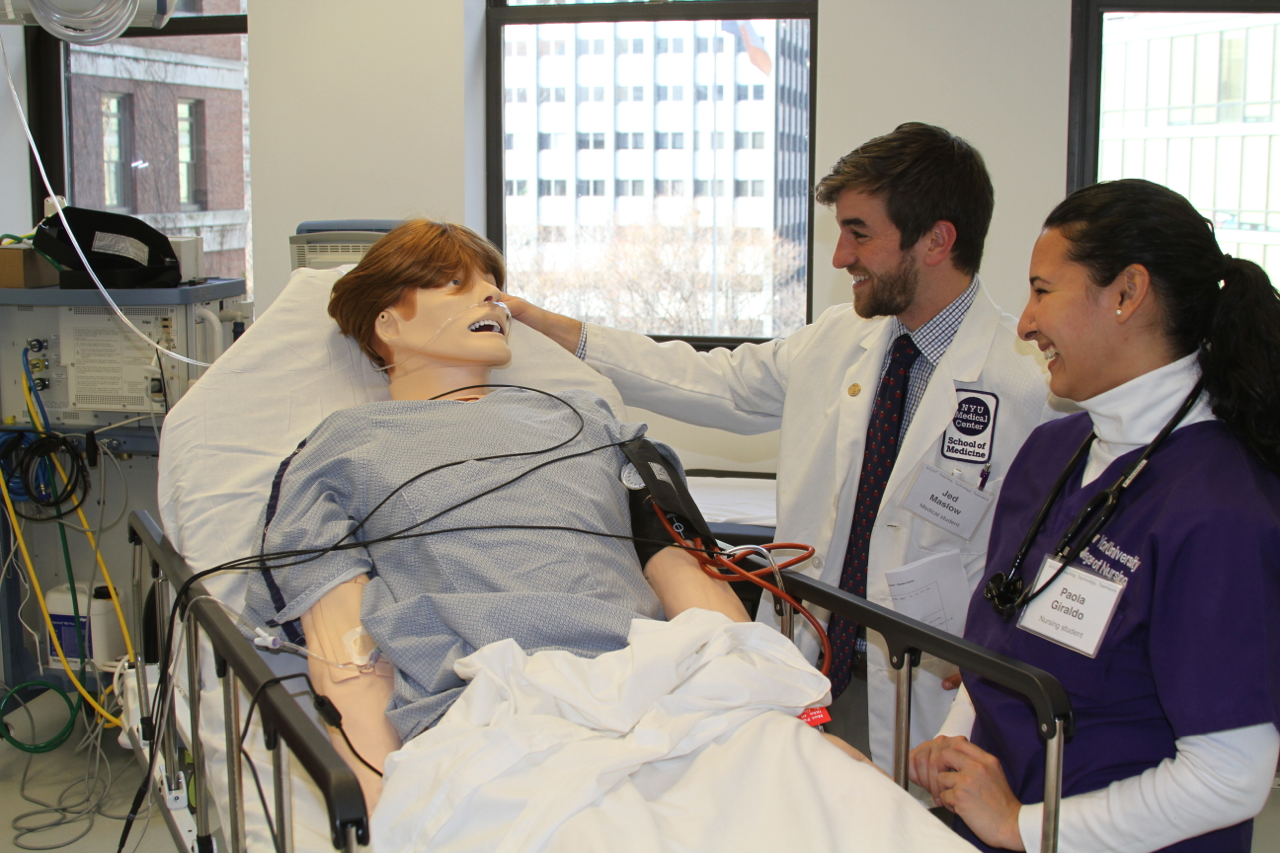
New York University’s School of Medicine and College of Nursing are a little over a mile apart, yet this distance proved a significant barrier to bringing together students from both schools to learn about teamwork. So Marc Triola, MD, Associate Dean for Educational Informatics at NYU School of Medicine and Terry Fulmer, PhD, RN, former dean at the NYU College of Nursing, turned to technology for a solution.
“There’s greater awareness and understanding of the role highly functioning teams play in good health care and, maybe more so, the role poorly functioning teams play in bad health care,” explained Triola. “Both the nursing and medical schools recognized it was time for us to incorporate teamwork into our curriculum and bring our students together to learn collaboratively. But with the distance and the large class size, we looked for a way to connect our students virtually.”
Leveraging Technology
Triola, Fulmer and Maja Djukic, PhD, RN, assistant professor at the NYU College of Nursing, mapped out a year-long curriculum focused on patient safety and quality improvement that leveraged online learning and computer-assisted instruction. They called it NYU3T: Teaching, Teamwork and Technology.
The curriculum is designed to bring together medical students in the second half of their first year and nursing students enrolled in a 15 month training program. After a kick-off event where all the nursing and medical students gather together in person, students spend the first semester of the NYU3T curriculum completing a series of five web-based modules on topics including teams and teamwork; communication and conflict resolution and interdisciplinary care planning.
But students don’t work through these modules individually. Teams of medical and nursing students are created at random and assigned interactive exercises that must be completed together online. To carry out the exercises, students use an instant messaging platform to communicate with each other.
Nursing students starting their programs mid-way through the NYU3T curriculum are paired with ghost students—virtual team mates that mimic the actions and responses of other nursing and medical students. Triola and Fulmer created these ghost students using the rich data they obtained from students who had already gone through the exercises.
Caring for Patients
In the second half of the curriculum, students put what they have learned into practice. Each medical student is paired with a nursing student to care for a virtual patient in an outpatient setting. The students must interview the patient and then write their notes and develop a care plan together. Students are assessed on their interprofessional competencies rather than their clinical knowledge given their limited clinical experience at this early stage in their education. The exercise, though virtual, closely mirrors how ambulatory care is delivered these days where the electronic health record functions as the main tool for interprofessional communication, explained Triola.
When the virtual patients become ill—one with a hip fracture and the other with chronic obstructive pulmonary disease—the students move to the simulation center at nearby Bellevue Hospital to tackle the health problems using mannequins. This is the first time that many of students have been at the bedside of a patient with someone from another health profession.
“While students appreciate the flexibility of the online learning modules, what they really want is to spend time with each other in the flesh,” says Triola. “There is a real desire among these students for interaction across the professions and for learning together in person.”
Results
So far, 750 students have completed the program, which is now in its second year. Assessments have shown that the computer-assisted instruction significantly improved students’ knowledge, and that this knowledge increase was sustained over the duration of the program. Students also showed positive changes in their attitudes.
“Students come in with many of the typical stereotypical attitudes toward the nursing and medical professions but as they go through NYU3T we see changes,” says Triola. “They begin to see value in strong communication skills and working in a team. As they pass through the simulation exercise they better understand and appreciate the contribution each team member makes to caring for patients.”
“Our students now recognize that teamwork is a fundamental part of the success of future health care,” he adds.
Students shared these sentiments in their evaluations:
“I had no idea what sort of education and training nurses, PA’s and others have. This was very helpful in allowing me to understand their responsibilities and how to best work as a team to provide care for patients.”—Medical student.
“I enjoyed spending time explaining nursing school to the medical students and vice-versa. I hope that with experiences like this, the communication and collaboration of future doctors and nurses will become one of teamwork and respect.”—Nursing student
Triola has added an assessment of interprofessional skills into the clinical skills exam that medical students take in their third year, allowing him to measure whether these changes are sustained one year after students have finished the curriculum. Results will be published soon.
What’s next?
Now, Triola is making the curriculum available to other institutions. Download the web-based modules, virtual patient curriculum and simulation cases for free from NYU’s website.
“The technology makes it very scalable,” says Triola “But you also need dedicated people—faculty and students who value interprofessional education—and the support of leadership who will commit resources and staff and faculty time to doing it.”
As they look to the future, Triola and Djukic hope to see a greater shift in the culture of health care, with doctors, nurse and other health professionals working in and fostering practice environments that reinforce teamwork and collaboration.
“Programs like us get things started, we create the fundamentals of knowledge and skills,” said Triola “But teamwork and collaboration has to be reinforced throughout the vertical of health care training, as students become residents or junior trainees, house staff, and leaders in health care.”